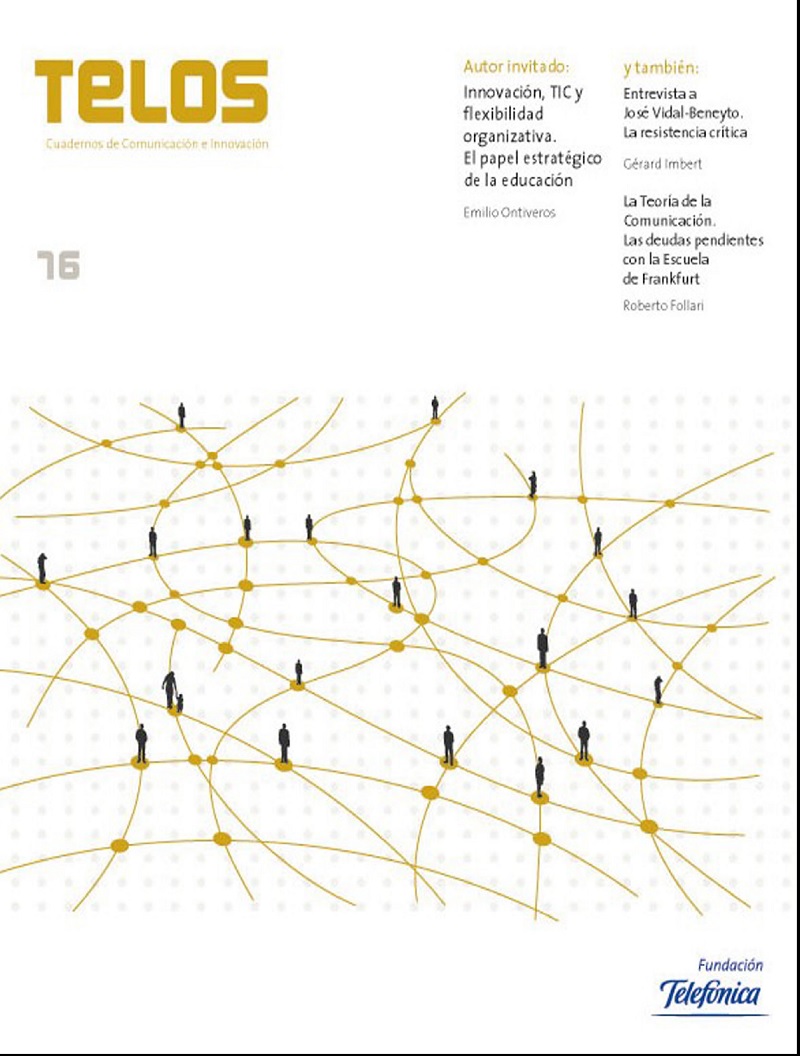
TELOS 76
In the dossier in this issue, coordinated by Antonio Fumero and José Cerezo, a group of Spanish professionals and teachers from a variety of disciplines and backgrounds address the most pressing and important new issues affecting the social networks that have been created in recent years on the Internet, especially within the so-called Web 2.0, and their most recent developments. Connected by their interest and direct experience in this field and on the basis of a central textbook which Telos already devoted to blogs, weblogs and logbooks (issue 65, 2006), also a pioneer of the time, a number of extensive texts and various points of view are shown to give a fully comprehensive review of the most important changes caused by telematic networks.
The services which have emerged (and are still emerging) from the fervour of Web 2.0 practically all claim to be social networks, one way or another. Between the two extremes, which are normally represented by social network sites that focus on content – a category which includes both blogs and sites created to share audiovisual content online, such as the popular Youtube, or photographic sites like Flickr – and contact sites (services for the online management of personal and social professional contacts: Facebook, Tuenti, hi5, Viadeo, Xing or LinkedIn) lies a broad spectrum of services which are segmented as the only way to offer some added value in a market that is now starting its consolidation.
In the dossier in this issue, coordinated by Antonio Fumero and José Cerezo, a group of Spanish professionals and teachers from a variety of disciplines and backgrounds address the most pressing and important new issues affecting the social networks that have been created in recent years on the Internet, especially in the so-called Web 2.0, and their most recent developments. Connected by their interest and direct experience in this field and on the basis of a central textbook which Telos already devoted to blogs, weblogs and logbooks (issue 65, 2006), also a pioneer of the time, a number of extensive texts and various points of view are shown to give a fully comprehensive review of the most important changes caused by telematic networks.
The services which have emerged (and are still emerging) from the fervour of Web 2.0 practically all claim to be social networks, one way or another. Between the two extremes, which are normally represented by social network sites that focus on content – a category which includes both blogs and sites created to share audiovisual content online, such as the popular Youtube, or photographic sites like Flickr – and contact sites (services for the online management of personal and social professional contacts: Facebook, Tuenti, hi5, Viadeo, Xing or LinkedIn) lies a broad spectrum of services which are segmented as the only way to offer some added value in a market that is now starting its consolidation.